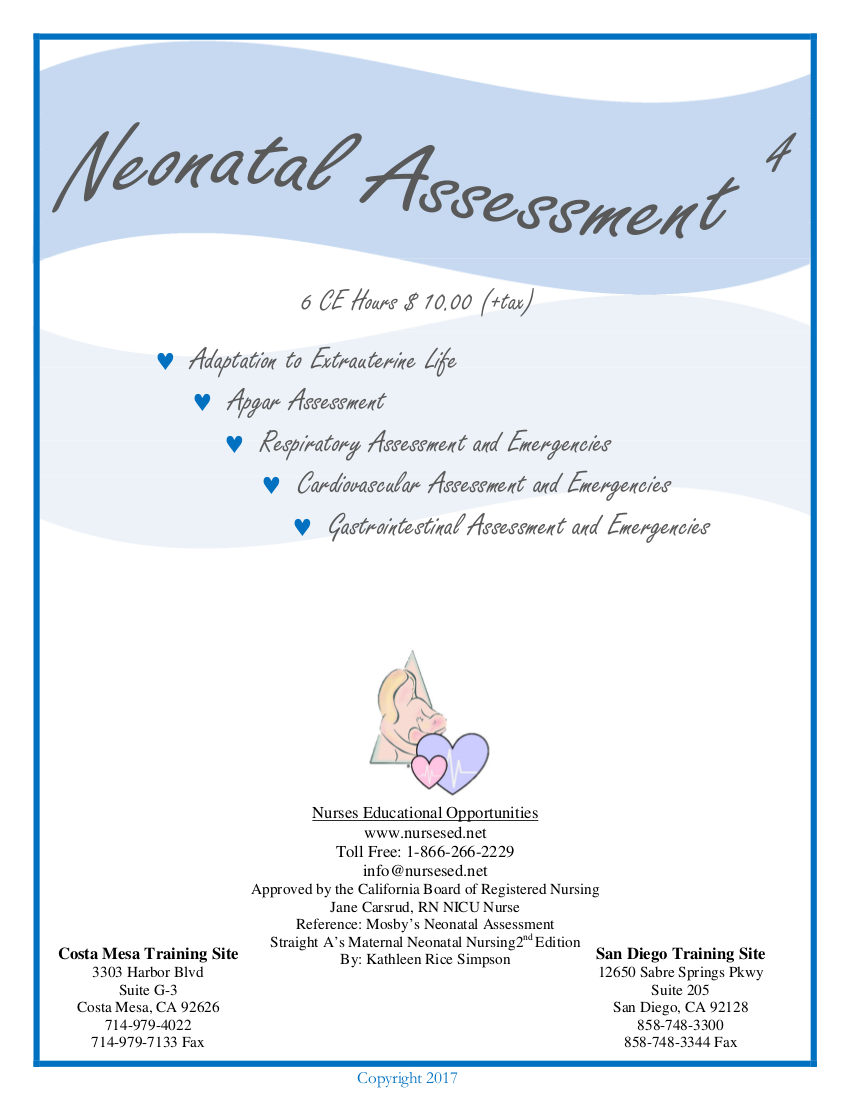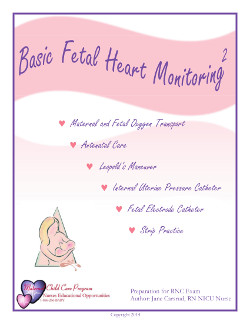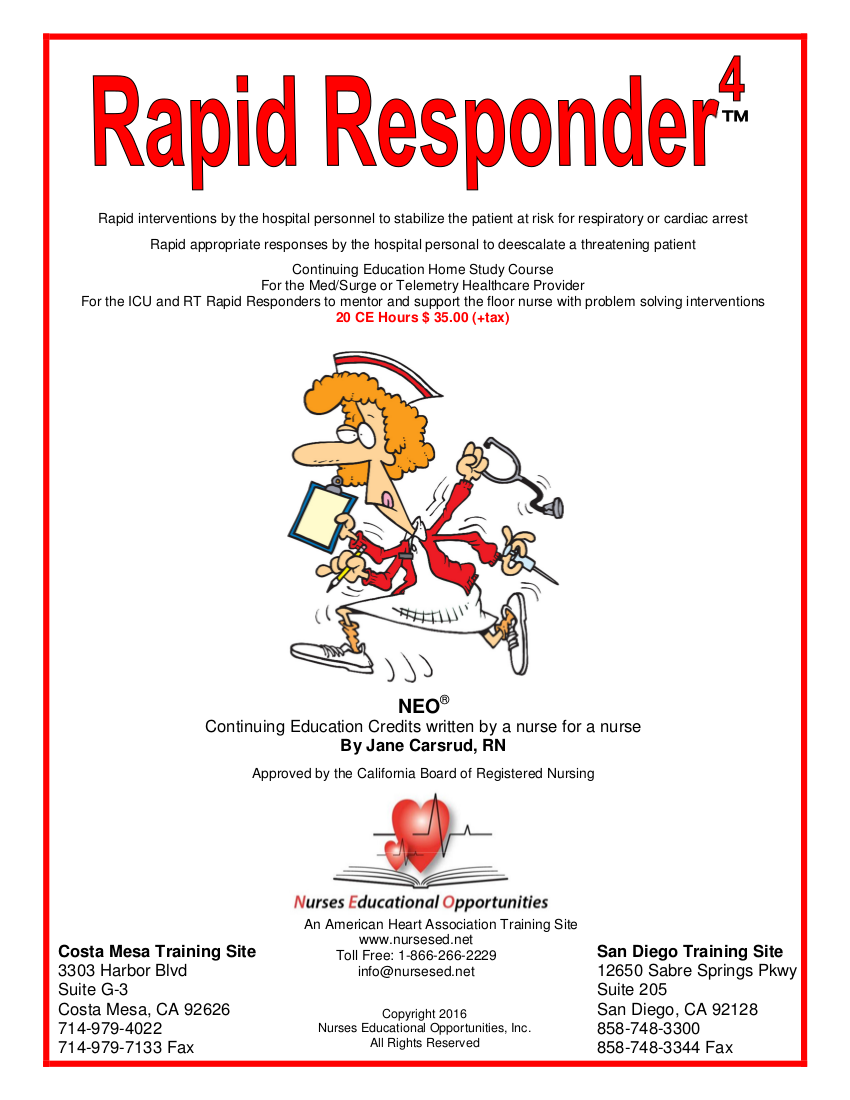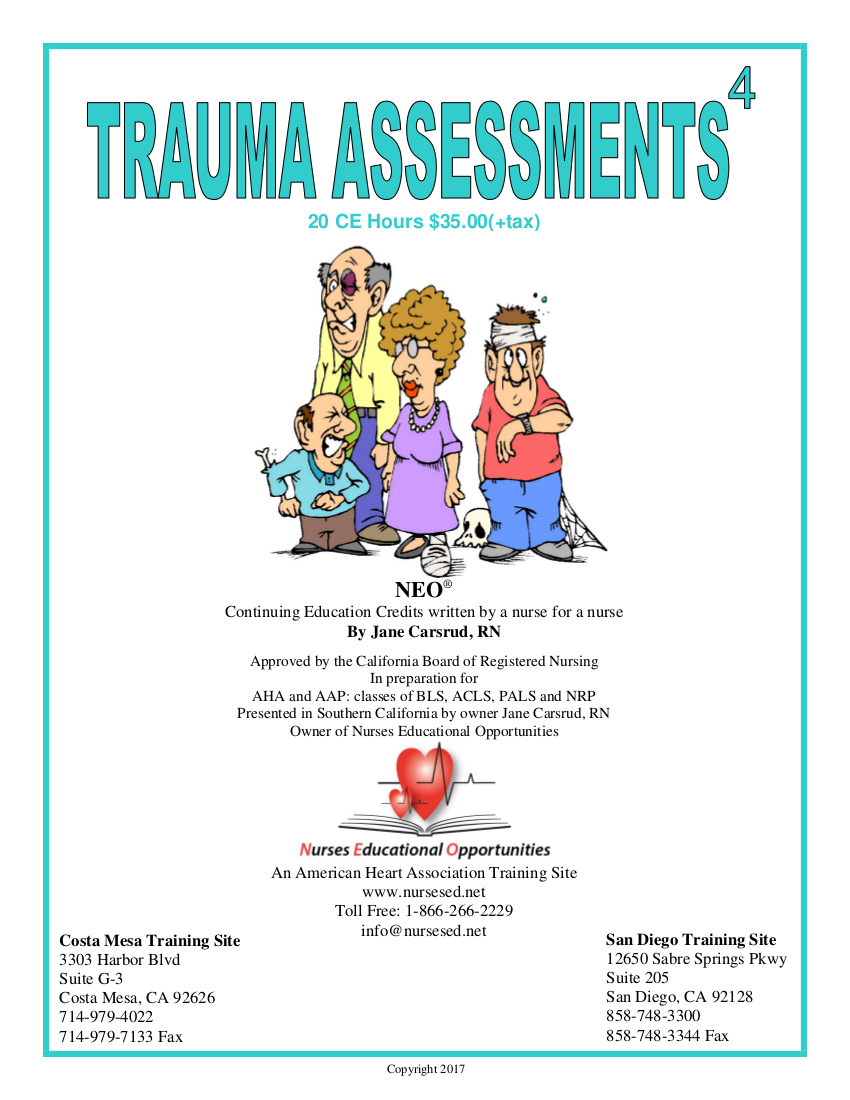
Adaptation of the Newborn to the 4th Power
Price: $35
CEs: 6 Contact Education Hours
Provider approved by the California Board of Registered Nursing, Provider Number 13004 for 6 contact hours.
Course Description
Routine care is essential for an infant in the first few days of life. Newborn infant care begins with investigation in the Apgar score. Newborn attachment is essential for well-being of both mother and infant. Nutrition for the infant is mother’s choice and should be respected. Delaying the infant bath by 12 hours will increase in-hospital breastfeeding
Guideline on rewarming a hypothermic infant is discussed. Care of the infant with jaundice is a significant element in the newborn’s care. Screening of the infant for genetic and metabolic disorders can reduce the risk of disease, disability or death if treated in a timely manner Immunization against viral infections that can cause chronic disabilities.
You can also purchase the Home Course, and use it for 6 Continuing Education units.
Course Objectives
Upon completion of this course the nurse will be able to state:
- The significance of an abnormal score and how it relates to further care
- The importance of attachment
- The differences between breast milk and preterm, soy, and elemental formula
- The economic benefits of breast milk
- The profiles of mothers who do not breast feed
- The barriers of breastfeeding by healthcare professions
- State the differences between colostrum, transitional milk and mature milk
- Describe the suck-swallow reflex , non-nutritive and nutritive sucking
- Describe rooting, latching, feeding cues that the newborn exhibits.
- Explain fixed feeding and how it impacts breastfeeding
- State the proper storage of breast milk
- State the contributing factors of reluctant nurses
- State the causes of nipple pain and interventions
- State the causes of engorgement and interventions
- State the causes and cues of insufficient milk supply and interventions
- State the causes and signs of plugged ducts and interventions
- State the cause and signs of mastitis and interventions
- State the purpose of withholding the bath for at least 12 hours after birth
- State the criteria and the contraindications of bathing an infant
- State the instructions for the mother to keep her baby safe from abductions
- Describe conjugated and unconjugated bilirubin
- Describe physiological, pathological, and breastfeeding jaundice
- Describe Total Bilirubin, Direct Bilirubin, and Indirect Bilirubin
- State the nursing goals of caring for an infant with jaundice
- Name three underlying causes of an abnormal genetic screen State the criteria of when to collect the genetic screen sample
- State the causes of an unsatisfactory specimen
- State the immunizations given to a newborn infant
- State the purpose of Vitamin K injection and antibiotic eye ointment
- State the components of a safe home environment Goals: Reducing errors and adverse outcomes for the newborn includes:
- Providing prophylactic treatment
- Communicate well
- Reduce delay in diagnoses
- Administer treatment or provide inappropriate care
- Anticipate problems before they arise
- Act promptly and effectively to adverse circumstances Reference Assessment and Care of the Newborn, Patti Thureen, W.B. Sanders Neonatal Resuscitation Program – AAP 4th Ed. California Newborn Screen –




